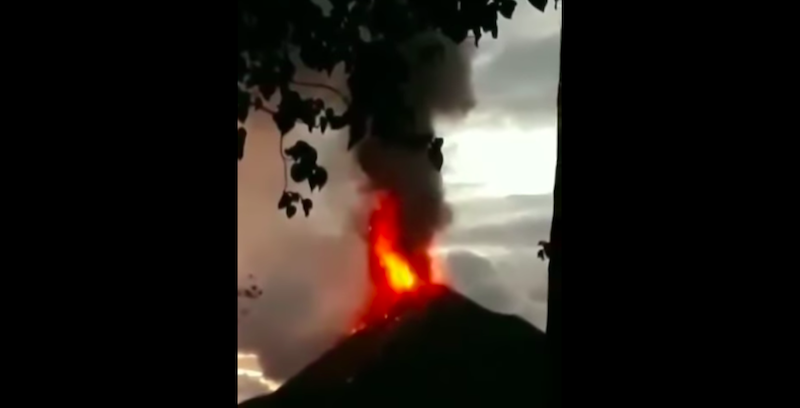There was no warning prior to the deadly volcano-triggered tsunami on the Sunda Strait on Saturday evening due to an absence of a tsunami warning system in the area — and across Indonesia — Indonesia Disaster Mitigation Agency (BNPB) spokesperson Sutopo Purwo Nugroho revealed this morning.
In a series of tweets, Sutopo wrote that Indonesia hasn’t had a functional tsunami detection buoy system, also known as deep-ocean assessment and reporting of tsunamis (DART), since 2012.
5) Tidak ada peringatan dini tsunami di Selat Sunda pada 22/12/2018 malam. Tidak adanya peralatan sistem peringatan dini menyebabkan potensi tsunami tidak terdeteksi sebelumnya. Tidak terpantau tanda-tanda akan datangnya tsunami sehingga masyarakat tidak memiliki waktu evakuasi.
— Sutopo Purwo Nugroho (@Sutopo_PN) December 24, 2018
“There was no early warning for the tsunami on the Sunda Strait on the evening of December 22, 2018… The fact that the signs weren’t detected means residents [of affected areas] did not have time to evacuate,” he wrote in a tweet.
6) Jaringan buoy tsunami di perairan Indonesia sudah tidak beroperasi sejak 2012. Vandalisme, terbatasnya anggaran, kerusakan teknis menyebabkan tidak ada buoy tsunami saat ini. Perlu dibangun kembali untuk memperkuat Indonesia Tsunami Early Warning System. pic.twitter.com/CqP7STcJCT
— Sutopo Purwo Nugroho (@Sutopo_PN) December 24, 2018
“Vandalism, limitation of funds, technical difficulties have led to the absence of functional tsunami buoys right now. They must be rebuilt to strengthen Indonesia’s tsunami early warning system,” he continued.
In December 2017, Sutopo first drew attention to the fact that Indonesia had a total of 22 buoy sensors scattered across its waters that were totally damaged: either stolen or vandalized.
Sutopo highlighted the fact again right after the devastating earthquake-tsunami that killed more than 2,000 people in Central Sulawesi in September. President Joko Widodo then called for the country’s tsunami buoys to be fixed, but it now seems evident that no progress was made on that front — at least on the Sunda Strait.
The Sunda Strait tsunami death toll has risen to 281 as of this morning, with more than 1,000 injured.
Hundreds of buildings were destroyed by the wave, which slammed into the coast of southern Sumatra and the western tip of Java about 9:30 pm (1430 GMT) on Saturday after a volcano known as the “child” of Krakatoa erupted.
According to Indonesia’s geological agency, Anak Krakatoa had been showing signs of heightened activity for days, spewing plumes of ash thousands of meters into the air.
The vast archipelago nation is one of the most disaster-prone nations on Earth due to its position straddling the so-called Pacific Ring of Fire, where tectonic plates collide.
Tsunamis triggered by volcanic eruptions are relatively rare, caused by the sudden displacement of water or “slope failure”, according to the International Tsunami Information Centre.
With additional reporting by AFP





Reader Interactions